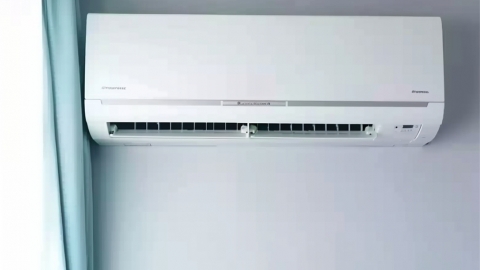Why do children get headaches from using air conditioning?
Generally, possible causes of headaches in children due to air conditioner use may include dry air, lack of sleep, upper respiratory tract infections, sinusitis, and migraines. Symptomatic treatment such as general care and medication might be needed. If a child experiences any discomfort, prompt medical attention should be sought to avoid delays in treatment. The detailed explanations are as follows:

1. Dry Air
During the cooling process, air conditioners remove moisture from indoor air, causing dryness. Nasal and throat mucous membranes can become damaged in dry conditions, losing their normal moist state, which can irritate nerve endings and cause headaches. Symptoms may include nasal congestion and sore throat. It is recommended to use a humidifier to maintain appropriate indoor humidity, drink plenty of water, and use normal saline nasal drops to keep nasal passages moist.
2. Lack of Sleep
Extended exposure to air conditioning may lead to decreased sleep quality in children or cause irregular sleep patterns due to overly comfortable indoor conditions, resulting in insufficient sleep. Sleep deprivation prevents the brain from resting adequately, affecting cerebral blood flow and oxygen supply, which can cause headaches during air conditioner use. It is recommended to maintain a regular sleep schedule and listen to calming music or read paper books before bedtime to aid sleep.
3. Upper Respiratory Tract Infection
Air conditioners often require closed windows and doors, limiting air circulation and providing an environment conducive to virus and bacteria proliferation. Children's immune systems are not yet fully developed, making them more susceptible to infections. Inflammation caused by upper respiratory tract infections can lead to headaches, possibly accompanied by fever, cough, and runny nose. It is recommended to follow medical advice to take medications such as amoxicillin granules, cefaclor granules, oseltamivir phosphate capsules, and others to relieve symptoms.
4. Sinusitis
Sinusitis is an inflammatory disease of the nasal sinus mucosa caused by viral, fungal, or bacterial infections, mainly manifested as nasal congestion, runny nose, headaches, and other symptoms. Poor indoor air circulation during air conditioner use can easily lead to pathogen proliferation, worsening discomfort symptoms in patients with sinusitis. It is recommended to use medications such as amoxicillin-clavulanate potassium dry suspension, cefalexin dry suspension, cefixime granules, and others under a doctor's guidance to control infections.
5. Migraine
Migraines may be related to genetic factors, imbalances in neurochemical substances, abnormal vascular function, and other factors. Temperature changes and dryness in air-conditioned environments can act as triggers for migraine attacks, especially in children with existing tendencies toward migraines. Attacks may be accompanied by nausea, vomiting, and sensitivity to light or sound. It is recommended to use medications such as indomethacin tablets, nimodipine tablets, compound propranolol caffeine tablets, and others under medical guidance for treatment.
It is advised to appropriately increase the air conditioner temperature to avoid significant temperature differences between indoor and outdoor environments. Additionally, set the air conditioner's fan speed to low to prevent cold air from directly blowing onto the child.




